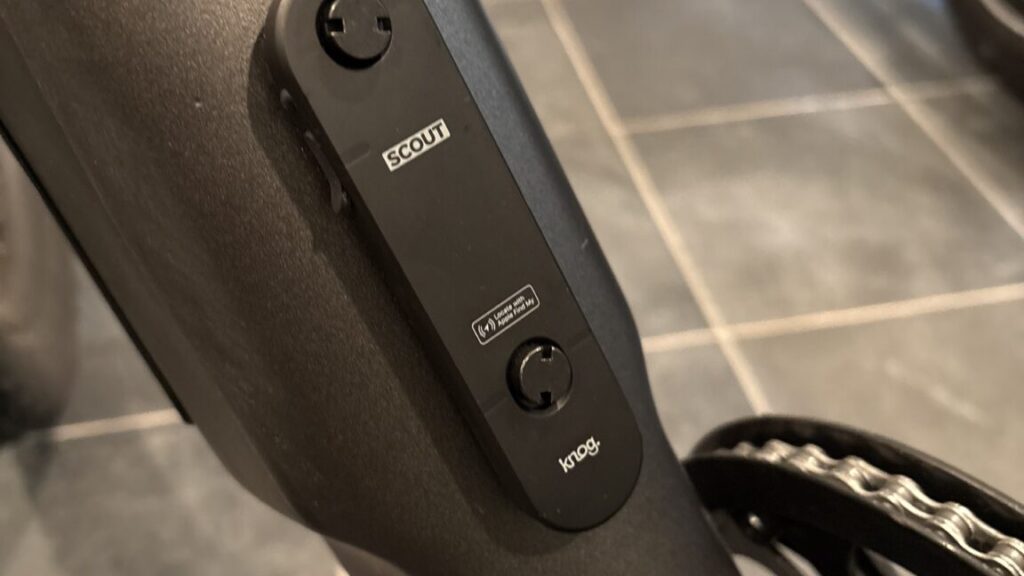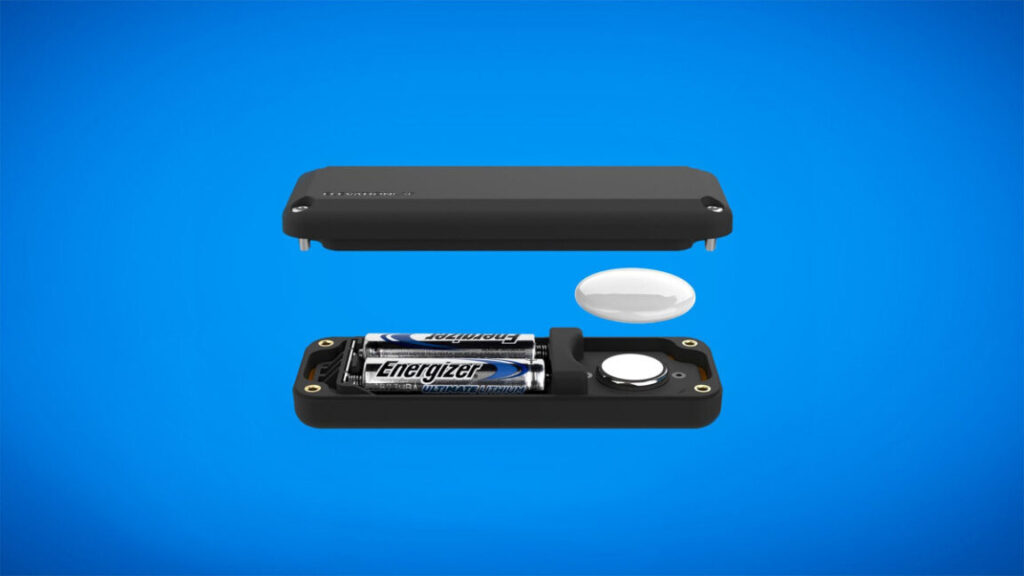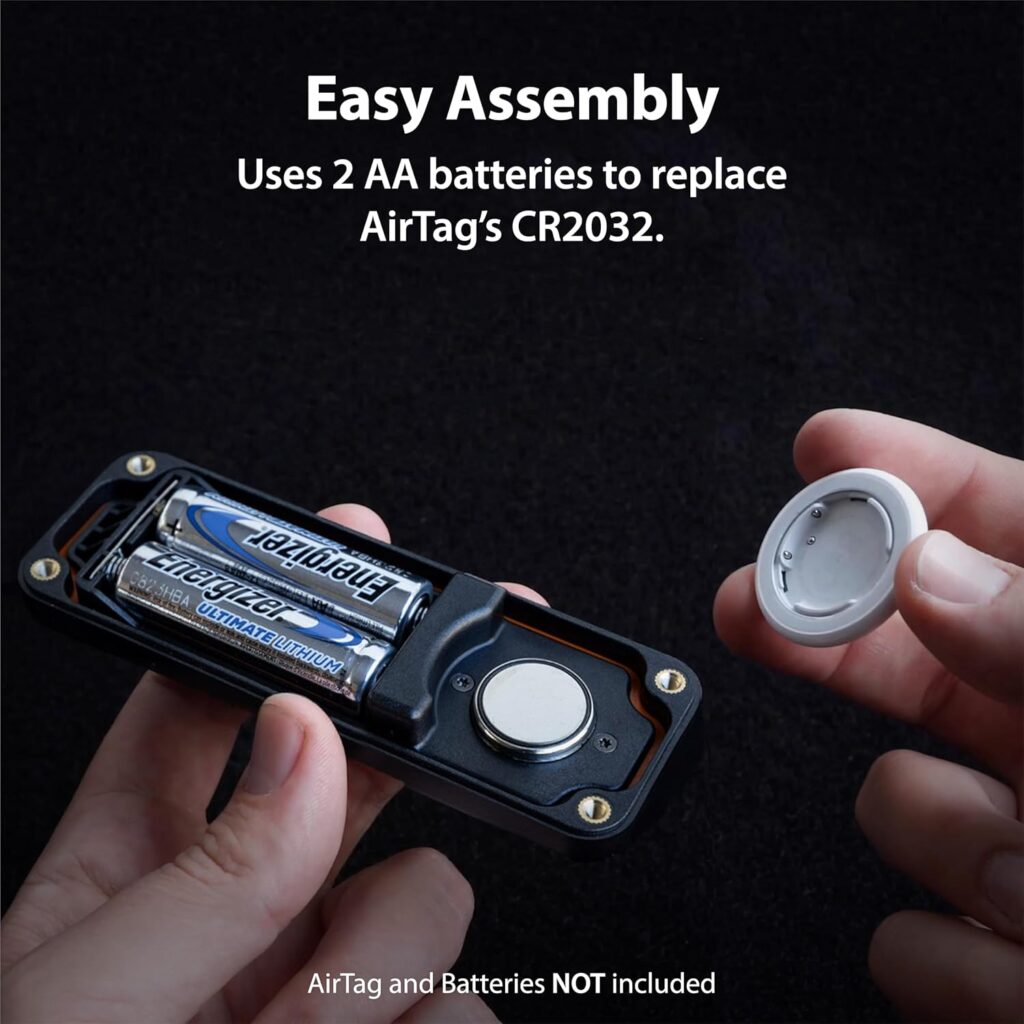Find my… bicycle?
Knog’s Scout gives bikes a motion-sensitive alarm and Bluetooth tracking.
We’ve reviewed some pretty expensive bikes here at Ars, and one of the consistent concerns we see in the comments is the fear of theft. That’s a widely shared fear, based on a whole bunch of videos that describe how to hide an AirTag tracker where a potential bike thief won’t notice it. There are also a number of products available that will hold a hidden AirTag in a reflector, a bike bell, or the head tube.
But Apple has also made it possible for third parties to plug their devices into its “Find My” system, and a company called Knog has made a Bluetooth bike tracker called the Scout that does just that. The Scout goes well beyond tracking, though, providing a motion-sensitive alarm system that will alert you if anybody tries to move your bike.
Meet the Scout
The Scout can be attached to the frame using the screw holes normally used for a water bottle holder. Security screws make it considerably more difficult to remove. Once there, it uses Apple’s Find My network to keep the owner apprised of the bike’s location (Android users need not apply at the moment). If you’re leaving your bike in a high-risk location, you can also use Knog’s phone application to set an alarm that will be triggered if the bike is moved.
Externally, the scout is a nearly featureless flat plastic oval. Inside this water-resistant case are a number of key components: a rechargeable battery that Knog says will last two to six months when fully charged, Bluetooth and GPS hardware, an accelerometer, and a speaker. There’s also a small rubber piece on one side that flips aside to reveal a USB-C charging port and two holes with recesses that are designed to protect the security screws that come with the Scout. The hardware itself weighs just 25 grams (less than an ounce), so it should be irrelevant to all but the most weight-conscious rider.
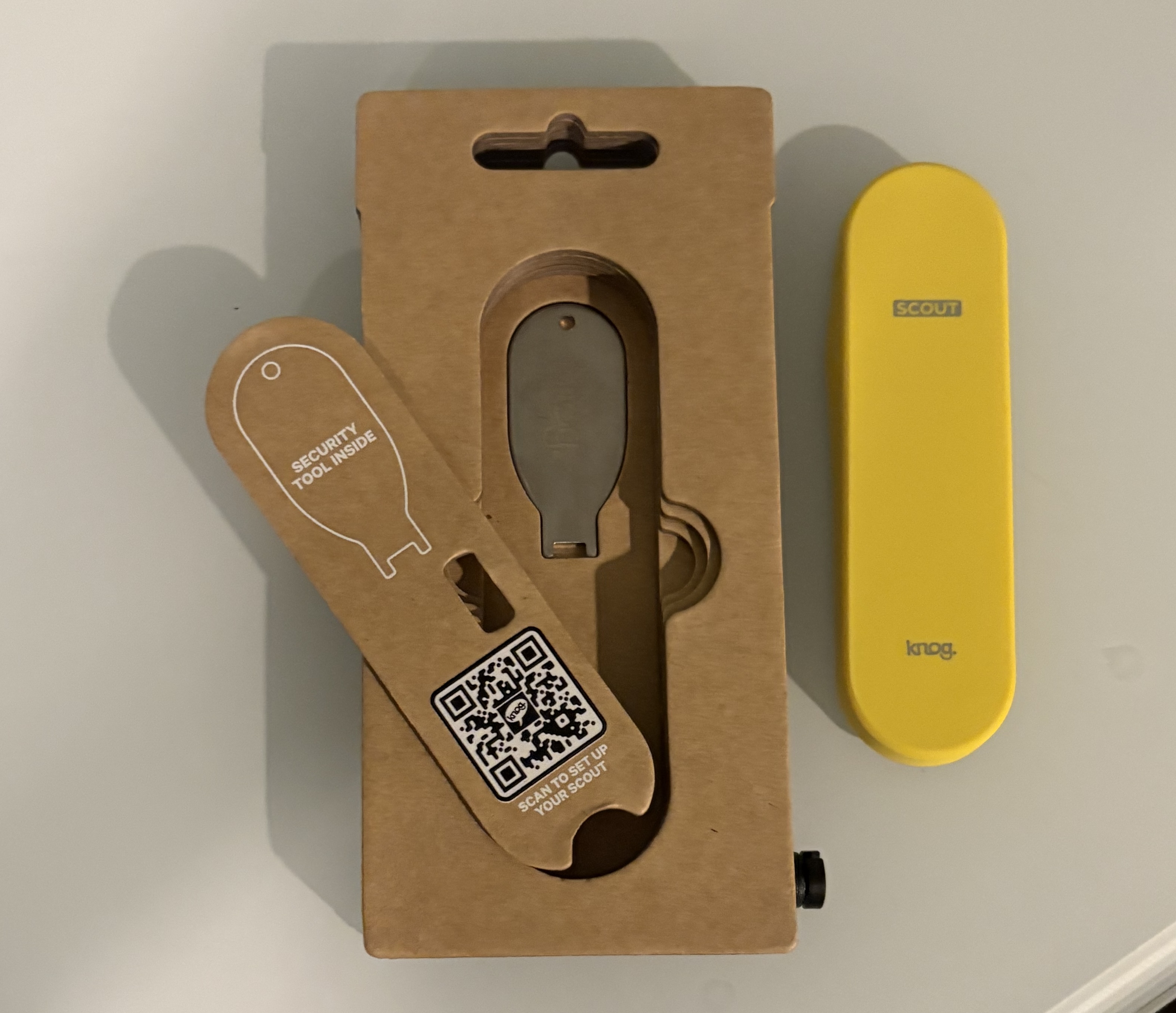
The cardboard packaging holds the Scout and its cover (yellow), a QR code for the app download, the security screwdriver (metal, in packaging), and the security screws (black at bottom right). Credit: JOHN TIMMER
All of this—the Scout itself, the security screws, a small screw driver to work them, plus a soft rubber cover—comes in a bit of ingeniously designed, recyclable cardboard packaging.
The security screws have two small indentations on opposite sides of the screw head, meaning you need a screwdriver with a U-shaped business end of a specific width to turn them (see the photo above if this description isn’t clear). While these tools aren’t that difficult to obtain, they’re sufficiently rare that they’ll probably serve as an impediment for casual thieves and at least ensure the tracker will stay on the bike for a while if it’s lifted by less casual thieves—though there’s no guarantee that any thief wouldn’t just take a hammer to it and wreck the electronics.
To attach it to the frame, however, you may need to give up one of your water bottle spots. I tried to install three different plastic water bottle cages beneath the scout and, in each case, the scout stuck out in a way that would make it more difficult or impossible to fit a water bottle in. The alternative is to install the Scout beneath the water bottle cage, but in that case, the heads of the security screws stick out where they can simply be grabbed and turned with some pliers. Only one of my 30-year-old aluminum bottle holders had a recess that nicely fit the Scout.
When installed this way, the Scout is nicely unobtrusive. And, of course, there’s nothing stopping you from hiding it somewhere else on the bike, though it’s considerably more bulky than an AirTag. And if you’re indifferent to obtrusiveness, you could always stick the bright yellow cover on and let people who are aware of the product know your bike has theft protection.
When the Scout is nestled in the recess of a water bottle cage, it’s impossible to stick a USB-C charging cable into it, so you’d have to remove it to recharge it, which will add to the hassle. Otherwise, charging is as simple as getting the bike within a cable’s length of a socket or laptop.
Alerts and alarms
Knog provides software that helps you pair your iPhone with the device. Once that’s done, it can be added to the Find My system, where it will appear just like an AirTag. The process worked smoothly in my tests, and in an iOS-heavy suburban environment, there was never any problem knowing where the bike was.
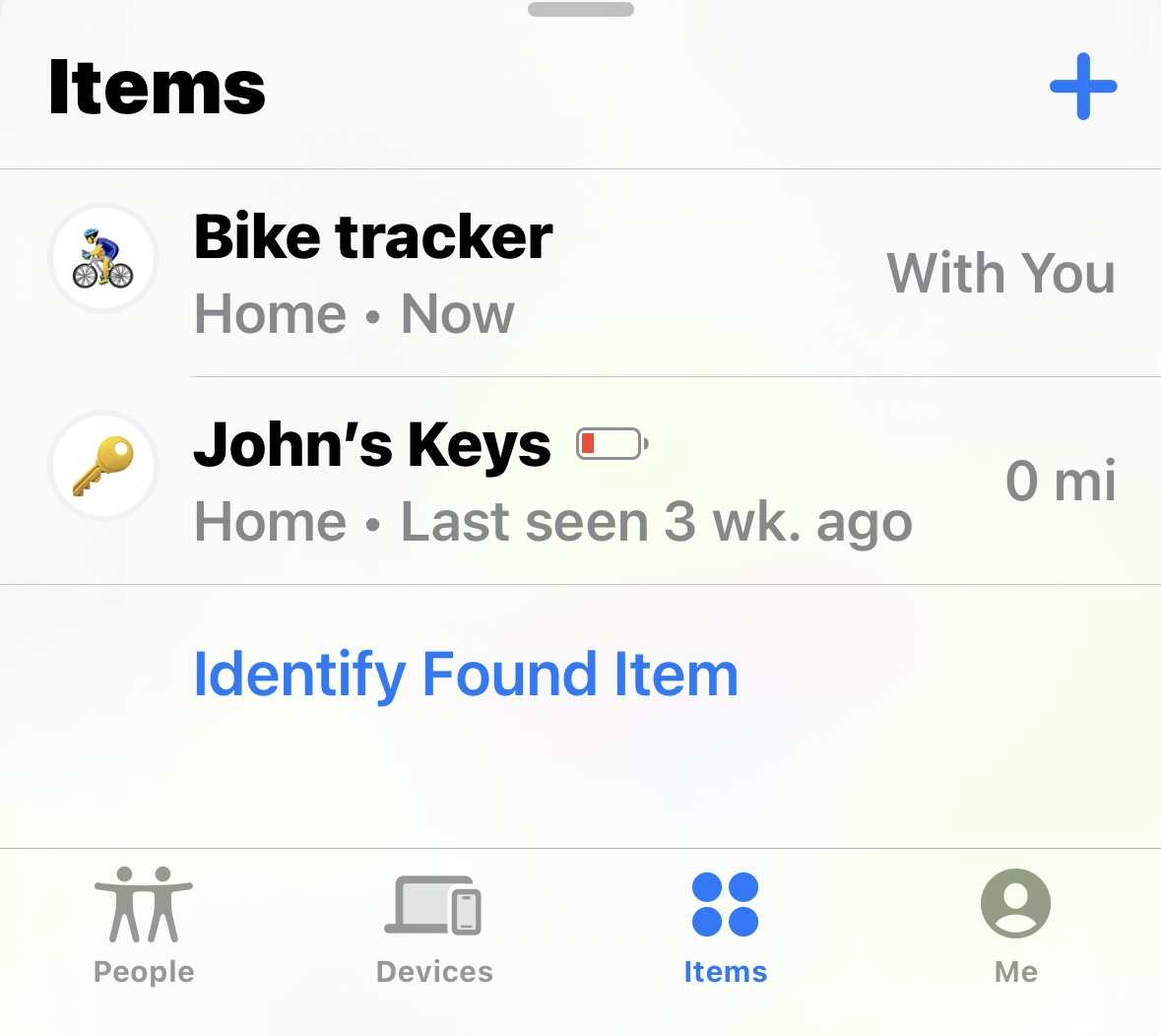
Unlike my AirTag, the bike tracker’s battery is easy to recharge. Credit: JOHN TIMMER
But what sets this device apart from an AirTag is its motion-sensing capabilities. If you’re within Bluetooth range, the Knog application will let you turn on the alarm system and switch between audible and silent modes. In sound-on mode, moving the bike produced a series of very audible tones. In both audible and silent mode, my watch and phone immediately vibrated, with the phone continuing to make audible beeps until the alarm was disabled. You have to be within Bluetooth range to get these alerts, though, which is probably a severe limitation for people like bike commuters, who may work some distance from where their bike is parked.
Given its piercing tones, it’s a good thing that the alarm eventually shuts off on its own. When I triggered the alarm while my phone was out of Bluetooth range, however, bringing the phone back into range gave me no indication that the alarm had ever been triggered. That’s not ideal, as there are many contexts where it would be good to know if someone had moved your bike or if the alarm had made a nuisance of itself.
The Scout’s nuisance potential is a product of its sensitivity. An accelerometer, not the GPS, triggers the alarm, so it will go off if the bike is simply lifted up and set down but not moved anywhere. If your bike ends up sitting in a crowded communal bike parking area, there’s a good chance other cyclists will move it around enough to trigger the alarm. Depending on your parking situation, you (and anyone within hearing range of the bike parking) may have to deal with a lot of false alarms.
So it’s not a perfect protection system. Of course, the perfect protection system against bicycle theft doesn’t exist; people who steal bikes have managed to stay ahead of every form of lock and device that has been thrown in their way so far. All you can really hope for is something that helps shift the odds in your favor a bit, and the Scout should do that. Its audible alarm will be enough to scare many potential thieves away, and the software can alert you to possible trouble if you happen to be within range. The tracking might help with recovery. And its presence alone may be enough to convince some would-be thieves to choose a different bike.
All this should make it clear that the Scout does considerably more than an AirTag, and all of those extra features act to keep a theft from ever happening rather than making a post-theft recovery more likely. It’s possible to find it for under $50.00, or about the price of two AirTags—if theft is a major concern, the extra features might make this worthwhile.
John is Ars Technica’s science editor. He has a Bachelor of Arts in Biochemistry from Columbia University, and a Ph.D. in Molecular and Cell Biology from the University of California, Berkeley. When physically separated from his keyboard, he tends to seek out a bicycle, or a scenic location for communing with his hiking boots.
